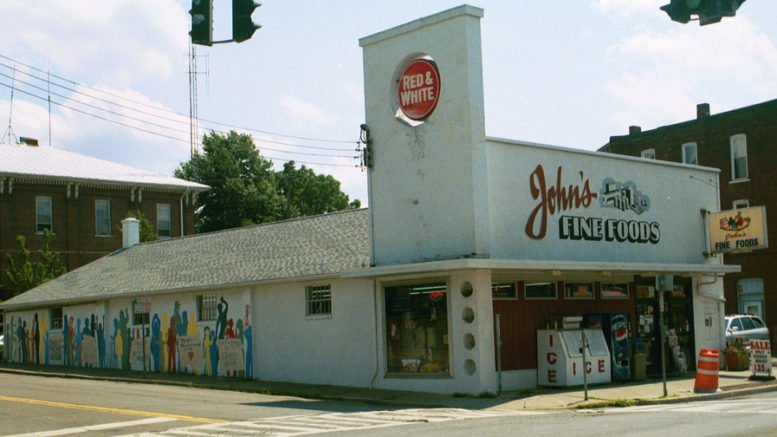If you choose to buy goods or services from web retailers, consider yourself part of the growing “e-commerce” trend. The appeal, sometimes as easy as one-click via your Smartphone, concerns many who are worried that we are just one click away from the demise of many of our longstanding brick-and-mortar establishments.
According to the Quarterly Retail E-Commerce bulletin released on May 17 by the Census Bureau of the Department of Commerce, the first quarter of 2018 saw e-commerce sales of $123.7 billion, or a 3.9 percent increase from the fourth quarter of 2017. Those figures were adjusted for seasonal variation. Data was also compared between the first quarters of 2018 and 2017, which showed a 16.4 percent e-commerce increase.
Despite the e-commerce upswing, and according to Cowen, Inc., century-old diversified financial services firm, consumers still do like the immediate gratification of shopping at physical stores. Recent proprietary research by Cowen’s revealed that consumers still shop at a physical establishment 75 percent of the time.
For Audra Marks, co-owner of Johnson’s Pools and Spas in Owego, the closings of several of our area’s retailers such as Macy’s, Sears / Kmart, BonTon and ToysRUs, to name a few, along with mom-and-pop shops, should be a concern to everyone.
“The lure of the internet is irresistible,” Marks commented, adding, “The effects of the demise of the brick-and-mortar retailer are far-reaching and substantial.”
Marks’ commented that if the trend continues, whereby consumers buy their next widget on-line instead of at a local business within their community, it would ultimately decrease the local tax revenue stream.
“This means fewer jobs for your neighbors,” Marks said, and she added, it impacts the support local businesses can give to area youth sports, fundraisers or community events.
If smaller businesses were to eventually close, Marks’ said, “Your taxes will go up, there will be a decrease in the property tax revenue stream, your now unemployed friends and neighbors will move away,” and added, “Community sponsored events will suffer.”
Johnson’s Pools and Spas employs over 25 individuals who are also volunteer firefighters, farmers, artists, and supporters of the county fair, area churches and youth sports, among others.
Marks’ further explained that local businesses contribute thousands of charitable dollars each year, and said, “The value of just one business is so much more than meets the eye.”
With so many retail closings in the last two years alone, many fear that brick-and-mortar is slowly fading away.
However, the investment and research firm, Moody’s, in a May 2018 analysis, “The Death of Retail is Greatly Exaggerated,” tells a slightly different story. Moody’s message is that while it is true that consumers are indeed buying more goods online, which in turn is putting pressure on some retailers who are also closing their doors, the decline of brick-and-mortar should not be seen as a major disruption, and instead, is necessary in a dynamic economy. In fact, several large brick-and-mortars have stepped up their game by offering on-line buying options.
Part of the retail problem, according to many sources, is that too many malls and shopping strips classified as C or D were built, while those in Class A, or more of a “destination property” that features an entertainment component, are the ones that are thriving and will ultimately survive since certain features cannot be copied on-line.
Another viewpoint from Renaissance Macro Research, which analyzes the U.S. economy as well as global trends, shared in April 2018 via Bloomberg.com, that we should take the reports of retail’s demise with a “grain of salt.” The research firm concurs that e-commerce has displaced some retail jobs which has caused visible damage like empty malls, yet the success of other retail categories is favorable.
Renaissance cited that department stores such as Kohl’s, as well as Macy’s, although Macy’s closed several locations including one in the Southern Tier, actually outperformed their entire sector so far in 2018.
Benefits of buying from your local brick-and-mortar, Marks explained, includes line items you may not find from web retailers, such as warranty coverage and the peace of mind that your significant purchase can be serviced by a local professional, along with the visual advantage of being able to ride in, touch, sit on or thoroughly inspect an item before you purchase it.
A critical point, according to Marks, is, “Consumers are underestimating local business,” and added that ultimately consumers should think through each purchase and how it affects them and their community.
A June 21 Supreme Court ruling that decided states can now collect sales tax from internet-based retailers should boost state revenues, yet how it all shakes out, and how it will affect small business is still too early to tell. Reaction from many, including members of Congress, has been mixed.
Marks’ also commented, “It’s important for the public to support local retailers before more are lost to the faceless, voiceless internet sellers who otherwise do not care about our community.”



Be the first to comment on "Local business vital to communities in today’s e-commerce surge"